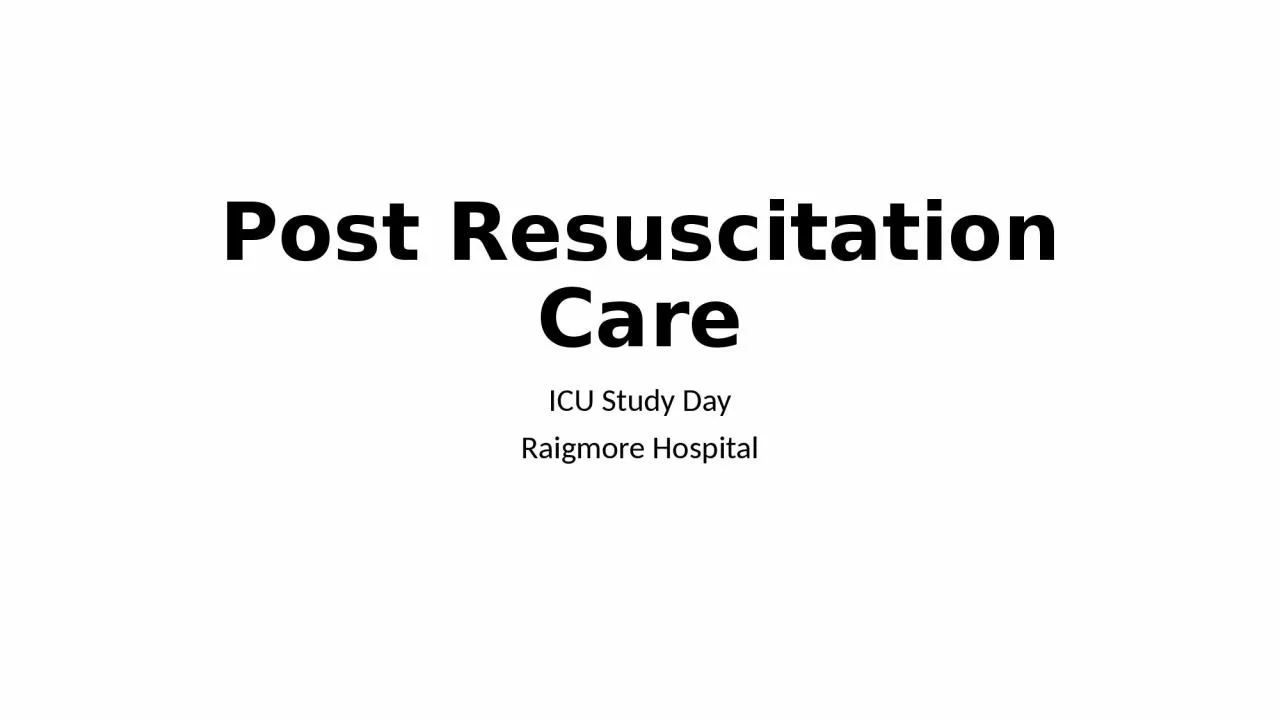

Raigmore Hospital Typical Team Introduction Successful return of spontaneous circulation ROSC is only the first step Complex total body pathophysiology Care commences where ROSC achieved With intensive care potential for 4050 survival to discharge ID: 928009
Download Presentation The PPT/PDF document "Post Resuscitation Care ICU Study Day" is the property of its rightful owner. Permission is granted to download and print the materials on this web site for personal, non-commercial use only, and to display it on your personal computer provided you do not modify the materials and that you retain all copyright notices contained in the materials. By downloading content from our website, you accept the terms of this agreement.
Slide1
Post Resuscitation Care
ICU Study Day
Raigmore Hospital
Slide2Typical Team?
Slide3Introduction
Successful return of spontaneous circulation (ROSC) is only the first step
Complex total body pathophysiology
Care commences where ROSC achieved
With intensive care potential for 40-50% survival to discharge
Slide4Post Resuscitation Care Algorithm
Slide5Post Cardiac Arrest Syndrome
Comprises of;
post-cardiac arrest brain injury
post-cardiac arrest myocardial dysfunction
systemic
ischaemia
/
reperfusion
response
persistent precipitating pathology.
Slide6Airway and Breathing
Oxygenation;
Not all patients need intubation
Maintain SpO2 94-98%
Beware hypoxia and
hypercapnia
Gastric tube
Slide7Airway and Breathing
Ventilation;
Intubation and ventilation if
obtunded
, sedation
Hypocarbia
causes
vasonstriction
decreasing cerebral
blood flow
Avoid
hyperoxia
in STEMI
Normocarbia
and protective lung ventilation
Slide8Circulation
ACS common cause of OHCA (59-71%)
Myocardial stunning, inotropes and fluids
Early PCI if indicated in STEMI
NSTEMI, assessed on risk
Monitoring………………………….
Slide9Circulation
MAP to achieve urinary output/patient’s normal
Watch lactate
IABP?
Hypothermia related bradycardia
Hyperkalaemia/hypokalaemia
ICD
Slide10Disability
Short term no flow followed by hyperaemia
Cerebral
hypoperfusion
up to 24hrs
Loss of autoregulation (35%)
Sedation
Slide11Disability
Control of seizures
Glucose control, avoid hypoglycaemia
Temperature management, hyperpyrexia common
No difference in mortality and outcome at 33c or 36c
Slide12Disability
Pupils,
remember………………..
http://www.glasgowcomascale.org
/
Absent pupillary reflex, poor outcome
Absent or extensor movements,
poor outcome
Uncontrolled seizures, poor outcome
Slide13Everything Else; Prognostication
Slide14Discussion
Priorities?
Dilemma over care needs?
Peer pressure?